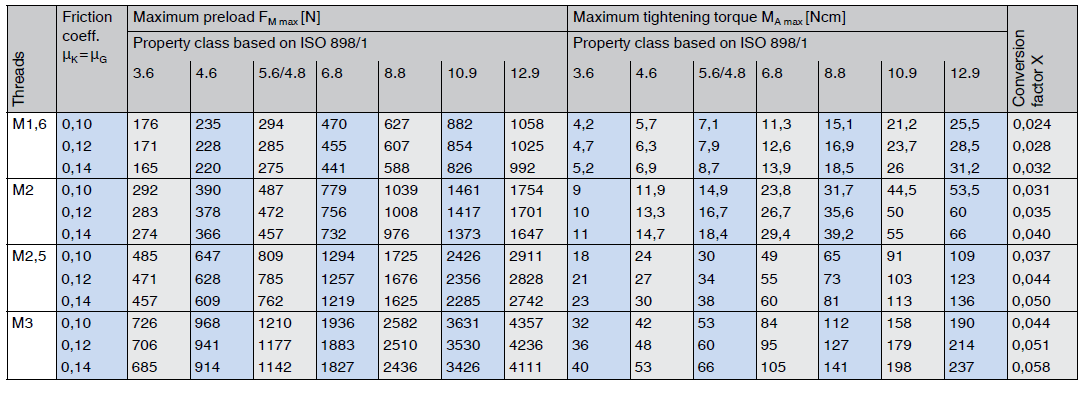Download Vdi 2230 English Pdf
Easy to deal with C-parts. Bossard Calculators – Easy to deal with C-parts 2 BOSSARD Fastener Calculators. Calculations are based on VDI 2230*, version 2003 Thread Engagement Length Calculator Bolts and nuts are made to match. Bossard / 10/10 / pdf.
Hi all, I have a copy of both the VDI 2230:2003 part 1 and MITCalc's bolted connection program. MITCalc's program doesn't fully follow the VDI 2230 in the fact that there is no easy way to input a tightening factor (alphaA).
I ran the calc program to find the minimum 'assembly prestressing of the joint (Fmin).' I then multiply this by the tightening factor of 1.6 for find Fmax. I insert Fmax into the program and check the safety factor on the bolt stress. Now for my question, since the tightening factor covers the friction and torque scatter, how do I account for those in my calculation? Do I just use the minimum possible friction coefficient (according to VDI 2230) for the lubrication state of my bolt (MoS2) for both the Fmin and Fmax calculations?
From which point in my calculation do I calculate the tightening torque? Thank you in advance for any guidence!

-BoilerM RE: VDI 2230 and MITCalc (Materials) 5 Nov 11 09:52. Thanks CoryPad. You appear to be the local expert on VDI2230.
I have really struggled to find any information or examples outside of the standard. Is this because it is a German standard and mostly used in Europe? If you could point me to any aditional resourses to help me understand this standard, I would appriciate it. I figured out how to do the tightening factor in MITCalc's software, but the allowable joint loads seem much smaller than practical. The only part I can pinpoint where my understanding is lacking which has a large factor on the calcualtion is the 'n' or 'load introduction' factor.
Would you be able to explain what Figure 5.2/9 is showing? How can I decide which one to choose? My joint consists of two bolts holding a thick plate to a tapped structure.
The plate overhangs the edge of the structure and the load is applied on this overhang, parallel to the bolt axis, on the same surface of the plate which is interfacing with the structure and acting in the direction of the bolt head. (see attached sketch) The bolt head is so close to the edge so a pressure cone is not developed, correct? My other assumptions for this situation would be that (according to Figure 5.2/10) ak = distance from edge of bolt face to the edge of the connected structure (largest diameter of the pressure cylinder) lA = distance from edge of connected structure to force application point h = midpoint of engaged tapped threads to top of plate Does this process appear to be correct and relavent to choosing the load introduction facter 'n' from Table 5.2/1? Format undangan pernikahan. Thank you in advance!
-BoilerM • RE: VDI 2230 and MITCalc (Materials) 26 Nov 11 20:37. While VDI 2230 is published in Germany, it is used worldwide. I do not know where there are external resources or examples for this standard and I can't explain why that is.
Figure 5.2/9 is supposed to help you determine where the external forces enter into the bolted joint. Based on your sketch, I think you could use SV4. I think your definitions of ak and lA are acceptable but h should be the top plate thickness. Yes, this process is relevant to choosing n from Table 5.2/1.
RE: VDI 2230 and MITCalc (Mechanical). I think a large part of my struggle is with this MITCalc program. I didn't understand the VDI well enough when I evaluated the program, but now I realize it does not follow VDI 2230. MITCalc takes protions and formulas from a few different standards and combines them into one program instead of following VDI 2230 exactly which is what I need my calculation to do. Do you have experience with any other strictly VDI 2230 calculation programs, or would you recommend working through the VDI formulas by hand in Excel? RE: VDI 2230 and MITCalc.